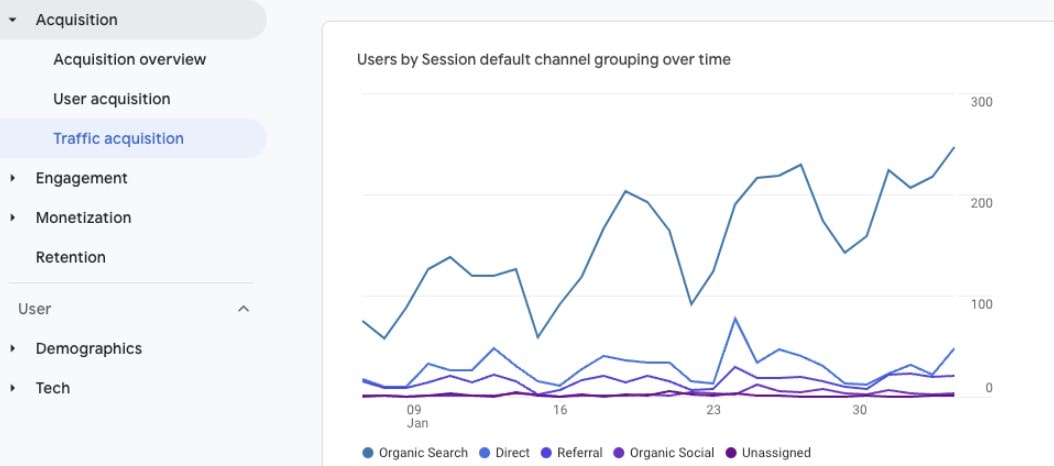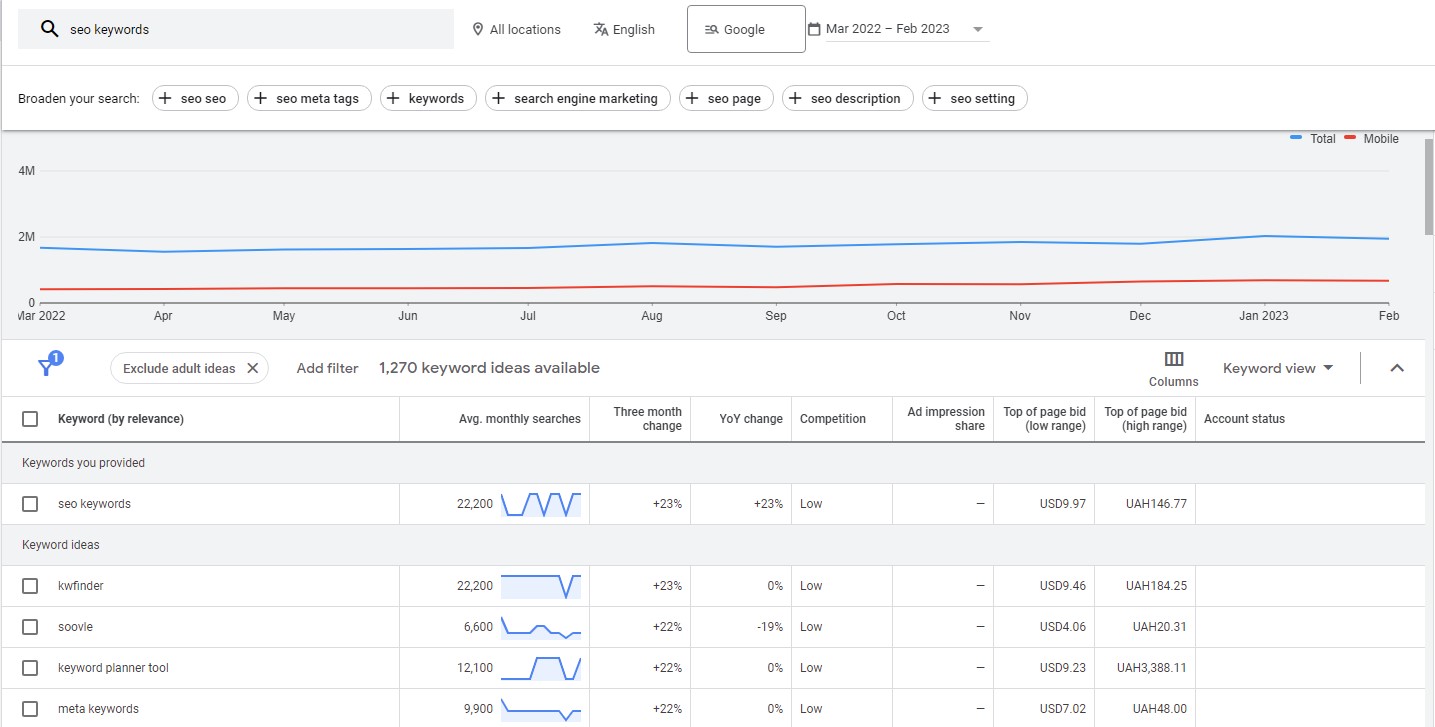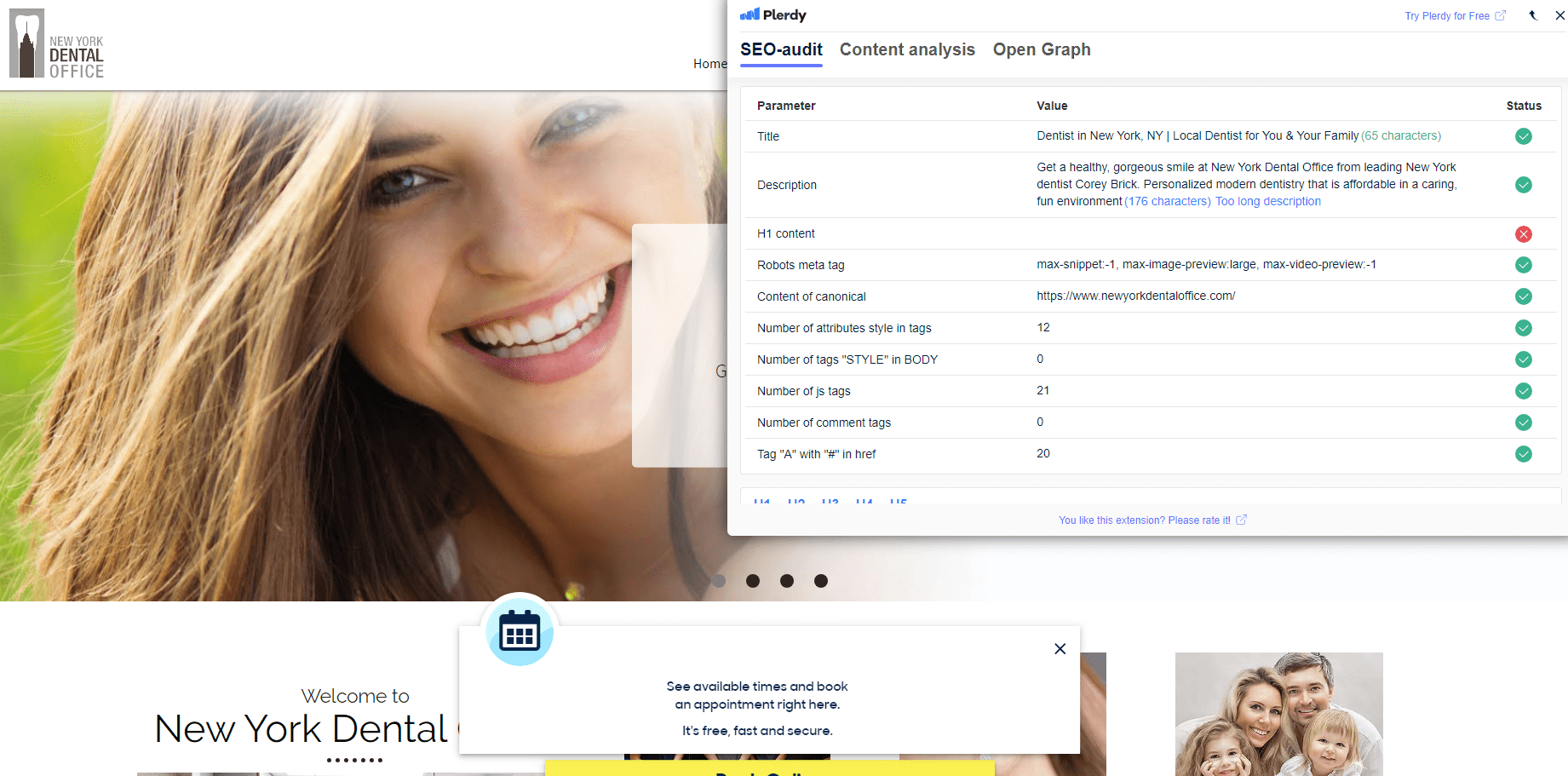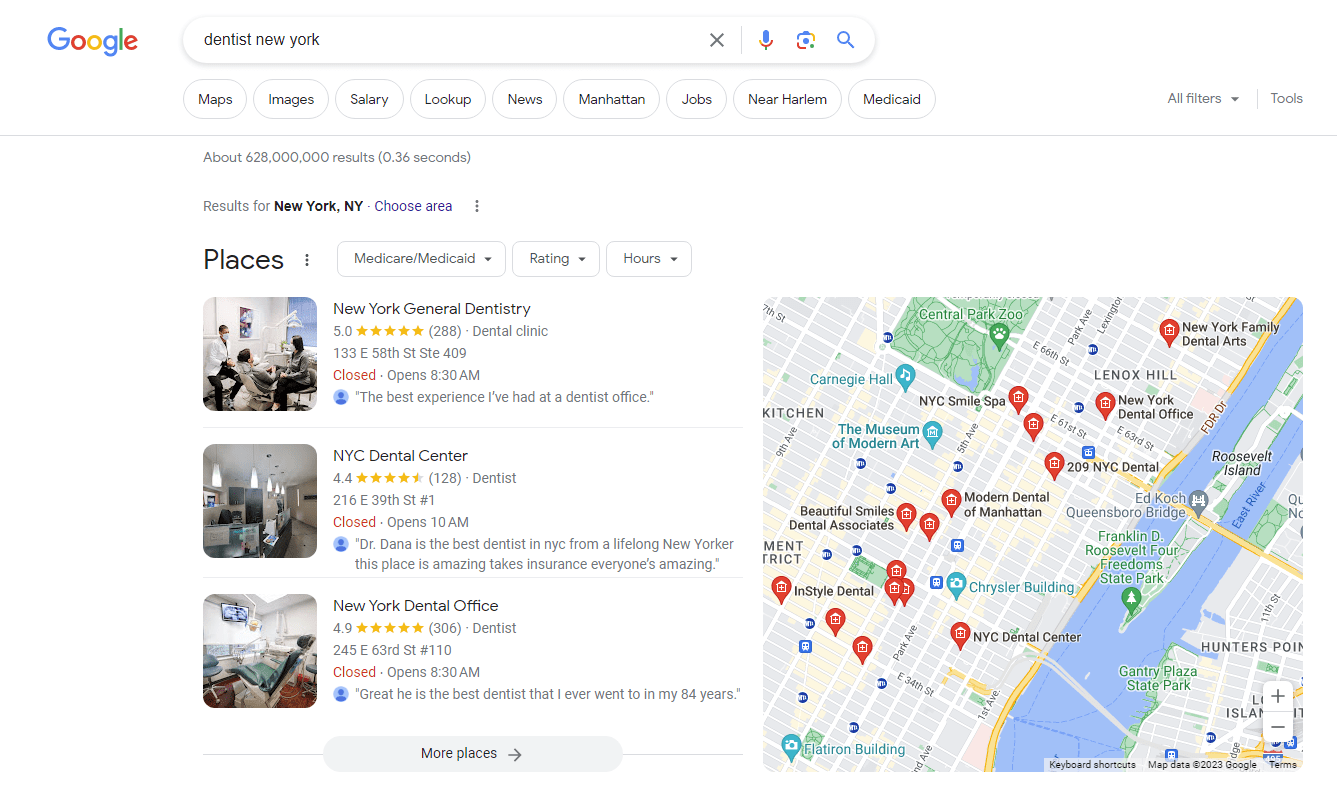Navigating the digital landscape can be tricky, especially when merging SEO and dental practices. But fear not! “SEO for Dentists: A Step-by-Step Guide” provides dentists with a roadmap to enhance their online visibility, driving more patients to their doors. Dive into actionable strategies that blend the unique requirements of dental clinics with best practices in SEO. Here’s a glimpse of what awaits:
- Tailored keyword strategies for dental specialties
- On-page optimization tailored to dental sites
- Backlink-building methods specifically for dentists
- Adapting user experience for potential dental patients

Boost your clinic’s online performance and outrank competitors with refined SEO tactics. And while you’re at it, consider leveraging Plerdy tool for an enhanced Conversion Rate Optimization (CRO) & User Experience (UX). Let your dental practice shine brighter in the digital universe! ✨⚡
What is SEO for dentists?
SEO for dentists is the art and science of optimizing dental websites to rank higher on search engines. In essence, it’s about making sure that when someone types in “root canal specialist in Miami” or “pediatric dentist in San Francisco”, your clinic shows up prominently. For the dental industry, SEO isn’t just about generic practices. It’s tailored to address the specific needs and challenges of dental professionals.
Consider these niche-specific examples:
- Pediatric Dentists: Focusing on long-tail keywords like “gentle pediatric dentist near me” or optimizing content to discuss the importance of early childhood oral care.
- Orthodontists: Highlighting treatments like “Invisalign” or “braces for adults” to cater to a broader age range.
- Cosmetic Dentists: Creating engaging content on “teeth whitening options” or “dental veneers process”.
Key components of dental SEO include:
- Local SEO strategies to ensure your clinic appears in “near me” searches.
- Building authoritative backlinks from health and dental-focused websites.
- Optimizing website speed, as patients won’t wait around for a slow site.
- Regularly updating the website with patient testimonials, before-and-after photos, and informative blog posts.
The digital landscape continuously evolves, but with tailored SEO practices, dentists can navigate this space with precision, ensuring their clinics get the spotlight they deserve. After all, it’s not just about having a digital footprint; it’s about leaving a lasting impression.
Why Dentists Need SEO?

Dentistry—like all sectors—has rapidly evolved with the digital age. As people increasingly rely on search engines to find dental care, having an SEO-optimized website propels practices to the forefront of search results. Dental practices that nail down SEO boost their visibility, driving organic traffic to their platforms. But why should a dentist care about website traffic? It’s simple:
- Enhanced Patient Trust: High-ranking websites often earn patient trust faster.
- Increased Appointments: A well-optimized website tends to convert visitors into regular patients.
- Positioning as an Authority: A high search ranking elevates the practice’s status, making it a go-to resource for dental advice.
In essence, SEO serves as a bridge, connecting potential patients to quality dental care, ensuring that your practice doesn’t just survive in the digital age—it thrives.
Key SEO Terminologies to Know
As dental professionals carve out their digital niche, understanding SEO jargon can make the difference between a website that gets buried in search results and one that shines at the top. Here’s a breakdown tailored to the dental domain:
- SEO Backlinks: When reputable dental associations or bloggers link back to a practice’s site, it amplifies trustworthiness in the eyes of search engines.
- Local SEO: Specialized SEO optimization techniques that zero in on attracting patients from nearby areas to your practice.
- Organic SEO Traffic: The number of visitors landing on a dental website directly from unpaid search results.
- Meta Descriptions: Short snippets that sum up web page content, compelling potential patients to click through.
Grasping these terms empowers dental professionals to navigate the digital landscape, ensuring their services stay front and center in an ever-evolving online ecosystem.
Researching Keywords Relevant to Dentistry

Unearthing the right keywords for a dental website sets the groundwork for successful SEO. This pivotal step ensures practices align with patient search habits, driving meaningful traffic to their platforms. When diving into keyword research, consider:
- Patient Concerns: Think “toothache remedies” or “braces maintenance.”
- Treatment Types: Such as “Invisalign consultations” or “pediatric dental check-ups.”
- Local Terminology: Integrating phrases like “best dentist in [City Name]” taps into community searches.
Harnessing these keyword insights helps dental practices craft content that resonates, putting their services squarely on the digital map.
The Importance of SEO Keyword Research
In the bustling digital landscape of dental care, pinpointing the right keywords is akin to selecting the right tools for a procedure. It’s the foundation that ensures your practice’s online efforts hit the mark. Strategic keyword research:
- Tunes into Patient Needs: By identifying terms like “emergency root canal” or “wisdom tooth extraction process,” you align with what patients actively seek.
- Boosts Organic Visibility: When your content resonates with frequent searches, it stands out in a crowded online space.
- Drives Relevant Traffic: Instead of just any online visitor, you draw those genuinely interested in dental care, increasing chances of conversions.
By meticulously crafting a keyword strategy, dental professionals set their websites up for success, ensuring they cater directly to the pulse of their potential patient’s online inquiries.
Tools for SEO Keyword Research
In the digital dentistry space, having the right SEO toolkit can supercharge a website’s visibility. Tapping into specialized tools ensures that dental practices extract relevant, high-potential keywords to capture patient attention. Some must-have tools include:
- Google Keyword Planner: A staple in the SEO community, it offers insights into search volume and competition, helping dental practices zero in on high-potential phrases.
- SEMrush: Beyond generic keyword suggestions, it provides a deep dive into search trends and competitor keyword strategies.
- Ubersuggest: Useful for unearthing long-tail keywords, such as “teeth whitening for coffee drinkers” or “adult braces options.”
Employing these tools arms dental professionals with the insights to craft content that resonates, ensuring their practice website resonates with those in pursuit of dental solutions.
Identifying Local Keywords
Local SEO remains a goldmine for dental practices. Tapping into geographic-specific terms can steer genuine patients right to your practice’s doorstep. Here’s how to refine your keyword strategy with a local touch:
- Neighborhood Names: Incorporate local areas like “Midtown dental clinic” or “Brooklyn tooth repair.”
- Landmarks: Use recognizable points, such as “dentist near Central Park.”
- Local Services: Highlight unique offerings, perhaps “Downtown dental spa treatments” or “Eastside pediatric dental care.”
Leveraging local-focused terms amplifies a website’s reach, ensuring nearby residents quickly find and choose your practice when dental needs arise. With such tailored keyword usage, professionals can effectively bridge the gap between online searches and in-person visits.
On-Page SEO Techniques

Mastering on-page SEO is like perfecting dental procedures – precise, meticulous, and always in service of the patient. For a dental practice’s website, the goal is seamless user experience paired with search engine allure. Key techniques to enhance on-page prowess:
- Meta Descriptions: Craft compelling snippets that capture both dental services and searcher intent, like “holistic dental care for families.”
- Header Tags: Structure content with relevant headers, ensuring terms like “root canal recovery” stand out.
- Image Optimization: Ensure images, from X-ray demonstrations to team portraits, are tagged and described aptly.
Employing these strategies ensures your dental website isn’t just polished but is primed to engage and convert searchers effectively.
Title Tags and Meta Descriptions
Diving deep into on-page SEO essentials, title tags and meta descriptions emerge as cornerstones. Picture a bustling street – your dental practice’s website is the storefront, the title tag is the neon sign flashing “Best Dentist Here,” and the meta description is that inviting display beckoning people in. Crafting these elements with precision can set you apart in search results:
- Title Tags: Strive for clarity and relevance. A tag such as “Pediatric Dentistry | [Your Practice Name]” zeroes in on specifics.
- Meta Descriptions: This snippet serves as a mini-advertisement. Example: “Experience gentle pediatric care tailored to kids’ unique needs at [Your Practice].”
By nailing these components, you carve out a distinct space in the digital landscape, drawing potential patients straight into the heart of your practice.
SEO URL Structure
In the bustling digital highway, a clean URL structure acts as a clear road sign, guiding patients directly to a dental practice. Optimal URL structures aren’t just a mix of letters and numbers; they tell a story, offering a snippet of what’s inside. For a dental practice website aiming for top-tier SEO, here’s the drill:
- Simplicity is Key: A URL like “www.dentalpractice.com/pediatric-care” spells out clarity.
- Avoid Numbers and Symbols: Stick to words that spell out the content.
- Hierarchy Matters: Use categories. For instance, “www.dentalpractice.com/services/root-canal”.
Diving into crafting these URL structures enhances the user experience and search engine’s ability to index pages. Thus, it’s not merely a technical aspect; it’s shaping the pathway for potential clients to effortlessly find your dental services.
Content Optimization
In the digital landscape of dental marketing, content doesn’t just sit pretty—it works hard, pulling in prospects and retaining loyal patients. To keep your dental practice’s website sparkling in the SEO spotlight, consider these content refinement steps:
- Tailored Topics: Dive deep into specifics like ‘innovative teeth-whitening techniques’ or ‘pediatric gum care.’
- Engaging Format: Break up lengthy procedures with infographics or brief video snippets.
- Keywords Integration: Without overstuffing, naturally weave in terms that potential patients might punch into a search bar.
- Update Regularly: From advances in braces technology to novel pain management, stay abreast of dental developments.
By honing your SEO content, you not only answer queries but also establish authority in the dental sphere, making your practice the go-to hub for both information and impeccable service.
Image Optimization
In the bustling digital hub of dental marketing, crisp and clear images set your practice apart. But beyond aesthetics, optimized images play a pivotal role in website performance and SEO rankings. To ensure your dental imagery elevates, not hinders, your online success, factor in these strategies:
- Size Matters: Compress images to ensure swift page loads without compromising quality.
- Descriptive File Names: Rename images to depict content, e.g., ‘ceramic-braces-smile.jpg’ instead of ‘IMG1234.jpg.’
- Alt Text: This invisible descriptor aids visually impaired visitors and search engines, painting a clearer picture of your dental services.
- Responsive Design: Ensure images adapt well to various screen sizes, offering mobile users a seamless experience.
By sprucing up your visuals, your dental website not only captivates but also operates efficiently, making it a beacon in the vast sea of online information.
Internal Linking
In the dental digital landscape, crafting a cohesive website narrative hinges on smart internal linking. Masterfully interwoven links lead users on an informative journey, showcasing a range of services – from teeth cleanings to intricate dental surgeries. Strategically positioned, these links bolster both user experience and SEO performance. Here’s how to ace this technique:
- Relevant Anchors: Use descriptive anchor texts like ‘teeth whitening options’ rather than generic ‘click here’.
- Diverse Paths: Direct visitors to both popular pages, like ‘oral health tips’, and niche offerings such as ‘pediatric dentistry’.
- Avoid Overlinking: While links enhance navigation, an excess can overwhelm and deter visitors.
- Prioritize Top Content: Highlight cornerstone articles or services that best represent your practice’s expertise.
By weaving pages together meticulously, a dental practice can guide users effortlessly, enhancing information discovery and solidifying its authority in the field.
Off-Page SEO Techniques

Dental practices aiming to dominate search results can’t just focus in-house – off-page SEO techniques are pivotal. Going beyond your own website, these strategies build your digital reputation and authority in the dental field. Delve into these effective off-page methods:
- Guest Blogging: Share insights on dental hygiene on health platforms, building backlinks to your site.
- Social Media Engagement: Share interactive dental tips and case studies, driving website traffic.
- Local Directories: Ensure your practice details are consistent across directories like Yelp, enhancing search visibility.
- Collaborate with Influencers: Partner with health influencers for shoutouts, directing their followers to your services.
Harnessing these techniques, dental practices can ramp up their online influence, pulling in more potential clients through diversified channels.
Building Quality SEO Backlinks
In the busy dental digital world, a solid backlink strategy can stand out. A stellar backlink profile doesn’t just boost your search rankings – it establishes your practice’s credibility and authority. Here’s how dental websites can beef up their backlink repertoire:
- Guest Posts: Pen articles on renowned health portals. For instance, a piece on “Modern Dental Procedures” can attract curious readers.
- Dental Forums and Communities: Engage in discussions, offer solutions, and subtly direct users to your website resources.
- Local Partnership: Collaborate with nearby non-competing health businesses for mutual shout-outs and link exchanges.
- Webinars and Online Workshops: Offer free online sessions on dental care, enticing attendees with useful resources linked back to your site.
By weaving these strategies into your SEO plan, dental practices can establish a robust digital foothold, making their website a trusted hub for both peers and potential clients.
Guest Blogging Opportunities
Tapping into guest blogging carves out a niche for dental professionals keen on amplifying their digital influence. Diving into this venture can drive search traction, bolster website metrics, and position your practice as an authority. Here’s how to harness this technique effectively:
- Target Relevant Platforms: Focus on health and dental-specific blogs. A post on “Pediatric Dental Care Tips” on a parenting blog, for example, fetches more engagement.
- Showcase Expertise: Dive deep into advanced dental topics, shedding light on complex procedures, but maintain layman-friendly language.
- Network Actively: Attend dental conferences, webinars, and workshops. Bump into like-minded professionals who run blogs and might be open to guest contributions.
- Stay Consistent: Don’t just stop at one. Regular contributions across platforms can cement your standing in the dental community.
By consistently zeroing in on these strategies, your dental practice can gain an edge, driving quality traffic and fostering trust.
Local Directories and Citations
Harnessing local directories amplifies a dental practice’s visibility in search results. Making sure your practice stands out on platforms like Yelp or Healthgrades can pull in local clientele and elevate your website’s SEO score. Dive into these strategies:
- Accuracy is Key: Ensure every detail, from address to opening hours, is consistent across all platforms.
- Engage with Reviews: Responding – whether it’s praise or constructive criticism – showcases active engagement and care for patients.
- Select Niche Directories: Branch out to dental-focused directories such as DentistDirectory or 1-800-Dentist to hone in on your target audience.
- Include Visual Elements: Bright, professional photos of your practice can ramp up appeal and trust.
By diving headfirst into these local directories and maintaining accurate citations, dental professionals can cast a wider net, capturing potential clients effortlessly.
Online Reviews and Testimonials
Powering your dental practice’s reputation, online reviews and testimonials directly influence search rankings and potential patient decisions. Transforming a casual website visitor into a loyal patient often hinges on genuine feedback from peers. Embrace these pointers:
- Showcase Authenticity: Pepper your website with genuine testimonials, resonating with authenticity.
- Respond with Empathy: Take time to engage with both positive and not-so-stellar feedback, displaying professionalism and care.
- Incentivize Feedback: Encourage patients to share experiences without swaying their opinions.
- Embed Review Widgets: Incorporate review tools like Trustpilot or Google Reviews, bridging the gap between your practice and prospective patients.
With a structured approach to online reviews, dental practices not only enhance their SEO standing but also cement trust, ultimately driving success in the competitive dental landscape.
Local SEO for Dentists

Amplifying your dental practice’s visibility hinges on mastering local SEO. As patients search for nearby dental solutions, your website should pop up, drawing them in. Tactics to dominate local search:
- Geotag Images: Upload pictures of your practice, ensuring geotags align with your location.
- Local Content: Craft articles or blog posts about community events or dental issues specific to your area.
- Consistent NAP: Ensure your Name, Address, Phone number remain consistent across all online platforms.
With these focused strategies, dental practices can easily tap into their local community, ensuring they don’t just search – but find and choose your services.
Claiming and Optimizing Google My Business Listing
In the bustling digital space, dental practices must stand out. A robust Google My Business (GMB) listing not only amplifies visibility but can also drive local patients straight to your door. Dive deep into GMB optimization with these strategies:
- Verified Listing: Kick things off by claiming your dental practice’s GMB listing. A verified listing offers authenticity, reassuring potential patients.
- Engaging Photos: Showcase your dental facility and team. Images humanize your practice, making patients feel more at home before even setting foot in your clinic.
- Updated Information: Hours of operation, services offered, and any other critical details should stay current. Any shifts in this data can confuse or deter potential patients.
- Compelling Description: Illustrate what sets your practice apart. Maybe it’s the state-of-the-art equipment or a comforting environment; let people know.
By refining your GMB, you set the stage for successful local SEO outcomes and an inflow of loyal patients.
Gathering and Responding to Online Reviews
In the digital age, online reviews serve as potent touchpoints for dental practices. These digital testimonials can influence potential patients and boost your website’s SEO rank. But harnessing this power requires an active, strategic approach. Dive into these actionable steps:
- Streamlined Collection: Use automated email campaigns to encourage satisfied patients to drop reviews. Highlight the ease of the process, guiding them through a click-and-submit journey.
- Prompt Responses: Engage with every review – be it praise or criticism. A heartfelt thank-you or a constructive response showcases your practice’s commitment to excellence.
- Showcase Highlights: Feature stellar testimonials prominently on your website. Real-life endorsements amplify trustworthiness.
- Continuous Monitoring: Keep tabs on your practice’s online reputation. Use tools to flag reviews, ensuring you never leave a comment unaddressed.
Tending to online reviews strengthens your practice’s digital footprint and fosters trust within your community.
Local Citations and NAP Consistency
Navigating the sea of local citations can get intricate for dental practices. Yet, a consistent Name, Address, and Phone number (NAP) across all platforms amps up the SEO juice for any dental website. Here’s how to dial in your approach:
- Audit Regularly: Dive into directories frequently and ensure your practice details stand unified.
- Prioritize Major Players: Platforms like Yelp, Healthgrades, and Zocdoc rank high in search. Ensure you nail the details on these first.
- Tackle Inconsistencies: Should you stumble upon any discrepancies, roll up your sleeves and get them squared away promptly.
- Harness Tools: Utilize software solutions to streamline your citation checks, saving time while boosting accuracy.
By locking down your NAP details, you solidify your dental practice’s digital credibility, making it easier for patients to find and trust your services.
Conclusion about SEO for Dentists
Diving deep into SEO for dentists has been an enriching journey. Harnessing the digital landscape, dental professionals can position themselves at the forefront of patients’ searches. Implementing strategies, from local SEO to authoritative backlinking, enables dental clinics to stand out in an increasingly competitive internet environment.
It’s clear from our exploration:
- Dental directory listings: Clinics must claim and optimize their place in online directories to improve their digital footprint.
- Engaging content: Crafting posts tailored to patients’ concerns can dramatically increase web traffic.
- Technical improvements: Speeding up your website, eliminating duplicate content, and optimizing for mobile ensures a seamless user experience.
Whether you’re an orthodontist trying to showcase the benefits of braces or a general dentist demonstrating the value of regular check-ups, SEO paves the way for increased visibility and growth.
Before wrapping up, remember to integrate tools for analysis. Dive into Plerdy for comprehensive SEO & UX analysis to understand your website’s performance better. With proper tracking and analytical insights, dental professionals can continuously refine their strategies. Stay persistent, stay updated, and ensure your dental practice gets the recognition it deserves in the digital age. ⚡?
